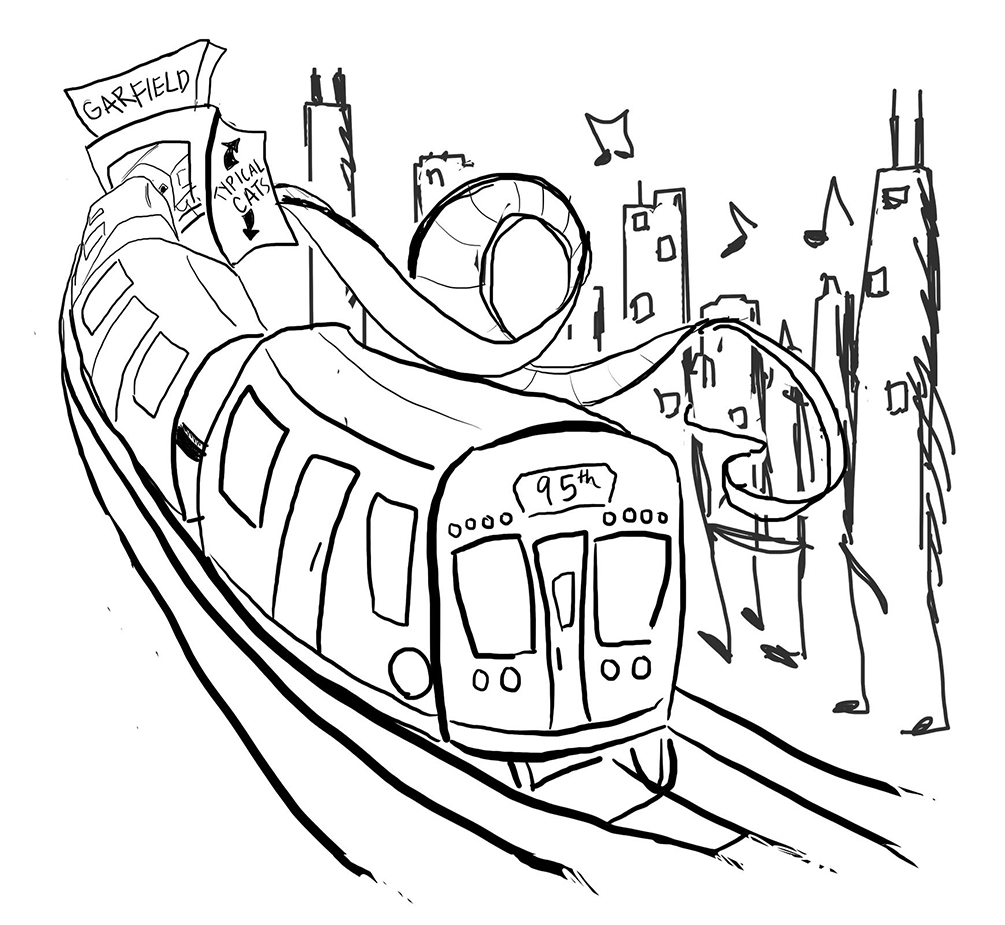
A Chicago newcomer—one unfamiliar with the Dan Ryan Red Line’s history of slowness or with its recent reconstructions—might have taken a ride from the 95th/Dan Ryan station to Chinatown on October 20 and concluded that nothing was out of the ordinary. An experienced rider, however, would have noted that the trip took them only twenty minutes, which, according to the CTA, is a phenomenal twenty-five minutes faster than it was prior to the reconstruction.
During my four round-trips on the renovated Red Line, many people took note of the train’s new speed. Some looked out the windows and seemed surprised to find that semi-trucks were no longer outpacing us as we rode alongside them.
One such rider, Evelyn, took her headphones out as the train sped from Sox-35th to 47th. She marveled aloud at the smoothness of the ride. “We still on the South Side,” she said, “but it’s much quieter, much faster, so it’s kinda nice.”
The CTA has also renovated stations along the Dan Ryan branch with new roofs, TV screens, loudspeakers, pavement, paint, and elevators. The only exception is the 95th/Dan Ryan station, which is the subject of a planned $240 million improvement. As it stands, the southern-most stop is not in serious disrepair, but looks shoddy in comparison to the rest of the Red Line’s stations.
“We’re gonna completely renovate and overhaul that station, and make it one of the best transportation hubs you’ve ever seen, anywhere,” enthused Steve Mayberry, a jovial CTA spokesperson. I met Mayberry at the Garfield station, where he was distributing CTA literature on the new Red Line South to just about everyone passing through the turnstiles.
While waiting for the trains to come, some riders admired the redone stations as well, scratching their heads or nodding to themselves as they inspected the shiny new screens and new elevators.
“It’s nice, clean, whole new pavement,” said Jason, a rider at the Garfield station. He tapped the pavement beneath him with the heel of his shoe and whistled. “Yep, real nice.”
Valerie, another woman I met during the afternoon rush hour on October 21, was in a hurry to pick up her child from daycare and expressed gratitude for the Red Line’s zippy new pace. “I know the train will get me there,” she said. “I went from 87th to 22nd this morning, and it was twenty minutes faster.”
She still had to worry, however, about whether the 87th Street bus would be on time when she got off the train. “Some buses, the bus tracker doesn’t work, or they show up late,” she said. “That’s very frequent on the South Side.”
Other riders also opined that the many problems with bus routes on the South Side should be addressed by the city. On one ride, I met a group of fifth graders coming home from school: AJ, Bailey, and a mysterious stoic boy who refused to identify himself as anything other than “X-Man.” When I asked them about public transportation on the South Side, they rattled off a list of buses that needed improvement.
“The 71st Street bus,” said Bailey.
“The 79th Street bus,” said AJ.
“The 85th Street bus,” said X-Man, enigmatically. There is no 85th Street bus.
Though most riders praised both the reconstructed track and the replacement buses offered by the CTA during the summer, there were some who remained dissatisfied.
On my second ride north, I saw a woman named Ebony standing at the door of the train and checking her watch. “It’s faster than it was, but the Green Line is still better,” she complained to me.
Many commuters said that the substitute buses worked fine, but some riders claimed the CTA’s coverage was shoddy and unreliable.
“Ha! the bus,” said a woman at the Cermak-Chinatown stop. She spent five minutes recalling what she said was a host of delays and hassles with the summer replacement buses. She followed me the length and breadth of the station, rattling off the Authority’s failings over the past few months.
Mayberry unleashed upon me a deluge of facts in defense of the CTA. He informed me that the 80,000 commuters affected by the construction were provided with “absolutely free, daily, non-stop shuttles,” in addition to fifty cent discounts on certain bus routes and Red Line trains on Green Line tracks. He paused frequently to ensure that no customer got on the train pamphlet-less.
However, despite Mayberry’s “eighty-seven new loudspeakers” and “10.2 miles of track,” commuters did not seem all that excited about the reopening of the Red Line. After an initial glance out the window to evaluate the train’s performance, riders returned to playing Bejeweled or sleeping. The only excitement over the line’s return to the South Side may have occurred last Sunday, when a train began to smoke on account of moving too quickly down the track. Still, the woman who told me about the mishap was quick to offer assurance that it wasn’t “that big of a deal.”
Improved public transportation on the South Side is an undeniable benefit, but it seemed that regardless of how fast the L goes, this is the general response to renovation: it’s not that big of a deal.

RIP ATTICA